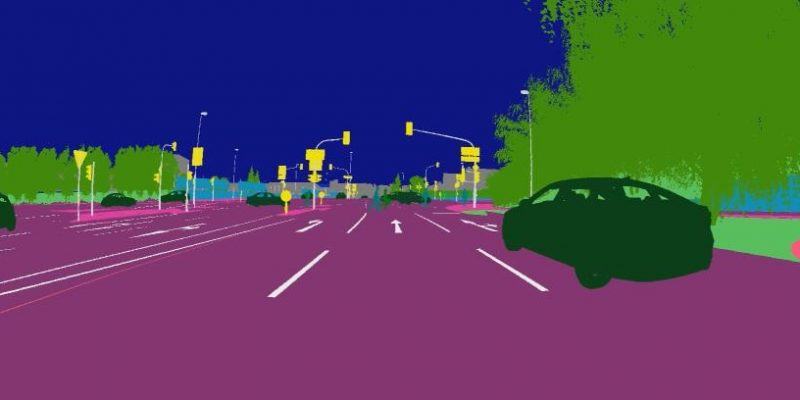Millbrook Proving Ground and Midlands Future Mobility have opted to develop ‘neutral host’ networks.
These are allowing any connected and autonomous vehicle developer to work with any mobile network operator of their own choosing. While 5G Open Ran (O-RAN) is not an open source, it is a significant new network provision in the UK, and beyond, and UK government policy is encouraging mobile network operators to embrace new, disaggregated RAN solution that are built from open, multi-vendor blocks. They will include hyperscale could solution provides and form the basis of network basis for networks over the next decade.
UTAC CERAM Millbrook’s Peter Stoker, chief engineer connected and autonomous vehicles, and Alexandre Bastard, cyber-security engineer, explain why they are taking this approach. Stoker said: “Economics, economics, economics and good network performance! The opportunities to host multiple operators on common hardware infrastructure could be one of the major innovation areas for the future, enabled by the most recent releases of standards and industry interoperability efforts, like Open RAN.”
Bastard added: “In line with UTAC CERAM Millbrook’s model of independence and impartiality, the neutral host concept is easy to visualize as part of the testbed. Instead of each operator (MNO) in a territory building and operating its own small cell network, UTAC CERAM Millbrook and Dense Air have built and equipped a small cell network so MNOs can all share the network and deploy both local licensed and their own spectrum across it.”
Validating CAVs and networks
There is also a need to validate connected and autonomous vehicles (CAVs) on both private and public 5G networks, which can be used for in-house, private testing on site, and they suggest they can be extended using a virtual private network. They said the same “neutral host” network can also provide public mobile services for multiple mobile operators and we are working to enable all options to allow a wide range of capabilities, including regular mobile network operators’ towers on site and shared 4G and 5G neutral host networks enabling both private and public services.
With four mobile network operators working together they can build 100% coverage across the strategic road network in the UK, or for that matter in any other country. To fill any gaps and to augment coverage, shared 4G and 5G will be used. The two added that Millbrook is pioneering the deployment of small cell based in-fill with Dense Air. Across varying road types and terrain, and it is in microcosm a series of deployments in what could be considered to be minimum viable infrastructures to inform nationwide deployment on the transport network – not just roads but also potentially rail.
Lower economic cost
Alastair Davidson, director, Wireless Infrastructure Group (WIG), suggests his organization is what open source is to software. He also argues that: “Neutral host networks lower the economic cost to the operators of getting wireless infrastructure rolled out, by anticipating from the start that we will get multiple mobile and other wireless networks on board.” Lower costs can be achieved after the initial investment over a 30-year period. This kind of collaboration also lowers the economic hurdle of investing new infrastructure, while enabling new coverage and technologies to be rolled out. He explains: “It’s an approach that is supported by government policy because independent infrastructure attracts investment into the sector to support network rollout; and at a local authority level it is an approach which is recognized at reducing the proliferation of infrastructure, reducing impact on the environment through a shared infrastructure approach. We are incentivized to maximize the utilization of our assets, which in turns means better connectivity and network choice for end users. Across the assets we own we have on average more than three networks on each piece of infrastructure.”
Davidson says that CAVs are going to change the face of transport over the next decade and so there is a need to provide a network infrastructure to support them, including ultra-low latency communications networks to permit the vehicles to talk almost instantaneously to the environment around them. “We are connecting all of the nodes by fibre to centralised equipment that will be able to control remote radios, and the fibre link is key to enable the low latency”, explains. This is achieved by using a form of edge computing as the operators’ baseband sits at the edge of the network in a local datacenter.
Open source
As for open source, Paul Senior, CEO of Dense Air, and his Millbrook partners, find that it is being used for autonomous control systems such as Autoware and Aslan: “These are being developed by communities that are not tied to a specific vehicle maker, allowing the development of new software stacks, algorithms and protocols before series production offers are fully formed.”
Open source principles can be used in other ways, beyond software development. That’s essentially what can be done to improve mobile network infrastructure and communications links. It enables hasten the development of the network infrastructure faster in the engineering phase with open access. Testbeds, for example, offer access to open source vehicle platform, which can directly access the vehicle network for development purposes. There is therefore no need to open up a vehicle CANBUS to test device in a controlled environment.
by Graham Jarvis
Source: https://www.tu-auto.com
CUT COTS OF THE FLEET WITH OUR AUDIT PROGRAM
The audit is a key tool to know the overall status and provide the analysis, the assessment, the advice, the suggestions and the actions to take in order to cut costs and increase the efficiency and efficacy of the fleet. We propose the following fleet management audit.




